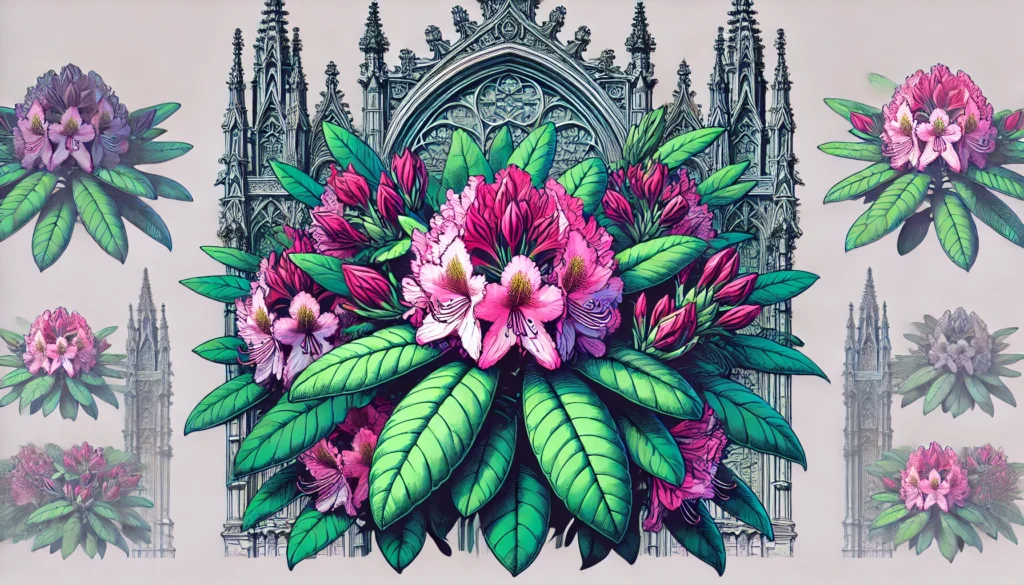

Home » Cat Plants » The Toxic Dangers of the Rhododendron Plant to Cats

The rhododendron, a popular flowering shrub, poses a serious threat to cats if ingested. This plant is highly toxic to felines due to the presence of grayanotoxins, which can cause severe health issues and even death.
Rhododendrons are commonly found in gardens, parks, and as houseplants, making them a potential hazard for curious cats.
Ingestion may cause mild gastrointestinal upset, but is generally not life-threatening.
Ingestion can result in mild symptoms like vomiting, diarrhea, or drooling. Rarely fatal but may require veterinary care.
Eating these plants can lead to more pronounced symptoms like abdominal pain, lethargy, or difficulty breathing. Veterinary intervention may be necessary.
Ingesting even small amounts can cause severe symptoms like organ damage, seizures, or cardiac failure without rapid treatment.
All parts of these plants are extremely poisonous to cats and can quickly lead to death, even with immediate veterinary care.
** Please note: Please note that toxicity level can vary based on the amount ingested and the specific cat. It's always best to keep these plants completely inaccessible to cats and seek immediate veterinary care or call the poison hotline if you suspect your cat has ingested any part of a toxic plant.
If your cat has ingested any part of a rhododendron plant, they may experience a range of symptoms due to the toxic effects of grayanotoxins. These symptoms can appear within a few hours of ingestion and may include:
In severe cases, rhododendron poisoning can lead to respiratory failure, cardiovascular collapse, and even death if left untreated.
If you suspect your cat has ingested rhododendron, it is crucial to seek immediate veterinary care. Your veterinarian will likely follow these steps to diagnose and treat your cat:

A: Yes, the Rhododendron plant is highly toxic to cats due to its grayanotoxins. Ingestion can lead to severe symptoms like vomiting, drooling, and even heart issues if not treated promptly.
A: If a cat eats Rhododendron, symptoms may include vomiting, drooling, and difficulty breathing. More severe signs, such as paralysis or irregular heartbeats, can occur if the toxicity is left untreated.
A: Yes, Rhododendron poisoning can be fatal to cats, especially if they ingest a large amount of the plant. Immediate veterinary attention is crucial to prevent potentially life-threatening complications.
A: To protect your cat, ensure that Rhododendron plants are kept out of reach, both indoors and outdoors. Opt for non-toxic plants like catnip or bamboo in your home and garden.
A: Yes, all parts of the Rhododendron plant are toxic to cats, including the flowers, leaves, and stems. The plant contains grayanotoxins, which can cause serious health problems even in small amounts.
A: If your cat ingests Rhododendron, contact your veterinarian immediately. Look for symptoms like vomiting, lethargy, or loss of coordination, and avoid delaying treatment.
Rhododendrons have a rich history dating back to ancient times. The name “rhododendron” comes from the Greek words “rhodon” (rose) and “dendron” (tree), referring to the plant’s rose-like flowers and woody growth. Carl Linnaeus, a Swedish botanist, first described the genus in 1753.
In the 19th century, rhododendrons gained popularity among European aristocrats, who financed expeditions to collect specimens from the Himalayas and China. These plants were prized for their beauty and were extensively hybridized to create new varieties.
Today, there are over 1,000 species of rhododendrons and countless hybrids, ranging from small shrubs to large trees. They are beloved for their stunning flowers and evergreen foliage, making them a staple in many gardens worldwide.
Please note: The information shared in this post is for informational purposes only and should not be considered as veterinary medical advice.
🐾 A hilarious or heart-melting cat video
🐾 Our latest paws-on review of a cool cat toy